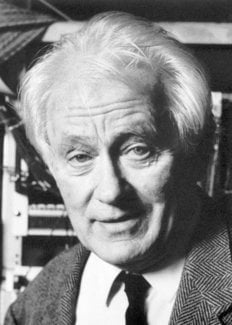Georges Charpak
Biographical
 (Translation)
(Translation)
| Born | |
| August 1 1924 in Dabrovica, Poland Naturalized French citizen in 1946 |
|
| Studies | |
| Lycée Saint Louis in Paris | |
| Lycée de Montpellier | |
| 1945-1947 | Ecole des Mines (Mining school) in Paris |
| Degrees | |
| 1948 | Bachelor of Science. Mining engineer. |
| 1954 | Ph. D. Physics. Experimental research in Nuclear Physics at College de France |
| Positions | |
| 1948-1959 | Centre National de la Recherche Scientifique (CNRS) |
| 1959-1991 | Centre Européen pour la Recherche Nucléaire (CERN) |
| Research | |
| 1960 | Participated in the first exact measurement of the magnetic momentum of the muon |
| 1961-1967 | Development of various types of nonphotographic scintillation chambers |
| 1962-1967 | Nuclear structure studied by reactions (p+2p) |
| 1968 | Introduction of proportional multiwire chambers |
| 1974 | Introduction of spherical drift chambers for studies of proteins by X-ray diffraction (Orsay) |
| 1979-1989 | Introduction of multistage avalanche chambers and application of photon counters for the imaging ionizing radiations |
| 1985-1991 | Participated in experiments at Fermilab (USA). Introduction of chambers based on luminescent avalanches. Development of instrumentation for biological research using b-ray imaging (Centre Médical Universitaire de Genève. |
This CV was written at the time of the award and later published in the book series Les Prix Nobel/Nobel Lectures. The information is sometimes updated with an addendum submitted by the Laureate. To cite this document, always state the source as shown above.
Georges Charpak died on 29 September 2010.
Nobel Prizes and laureates
Six prizes were awarded for achievements that have conferred the greatest benefit to humankind. The 14 laureates' work and discoveries range from quantum tunnelling to promoting democratic rights.
See them all presented here.
Explore prizes and laureates
Look for popular awards and laureates in different fields, and discover the history of the Nobel Prize.
